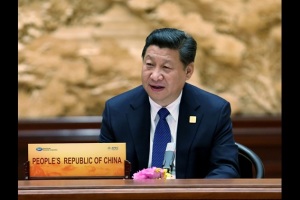Top Global government and private sector leaders convened in Beijing, China for the APEC (Asia-Pacific Economic Cooperation) conference in early November.
Representatives of 21 nations “which straddle the Pacific” – from Asia, North America, and South America — attended the meetings which concluded on the 11th.
One of the decisions was to continue work toward the creation of a Free Trade Area of the Asia-Pacific or FTAAP. According to DW TV, the FTAAP plan triumphed over a “rival” one by the United States which would have excluded both China and Russia.
Around the same time, Japan generated news of a different kind.
The headline of business news publication Nikkei Asian Review on November 2, 2014 read,
“China concerns fuel Japan’s drive for homegrown fighter jets”
The business publication reported,
“National prestige aside, the biggest reason for Japan’s wanting a homegrown fighter is to defend against possible Chinese aggression.”
And it added,
“Many people in Japan’s defense industry say there is no guarantee the U.S. will continue supplying advanced military equipment. Japan, the thinking goes, has no choice but to make its own gear.”
While Japan may be worried about China, others are said to have serious concerns involving her.
The Telegraph’s October 31, 2014 headline read,
“Japan risks Asian currency war with fresh QE blitz –The Bank of Japan is mopping up the country’s vast debt and driving down the yen in a radical experiment in modern global finance”
The British newspaper reported,
“Critics say it threatens a trade shock across Asia in what amounts to currency warfare, risking serious tensions with China and Korea, and tightening the deflationary noose on Europe.”
The Telegraph explained what can result,
“As each country resorts to a beggar-thy-neighbour policy in moves akin to the 1930s, deflation is dumped in the lap of any region that is slow to respond – currently the eurozone.”
Read the article about Japan’s aerospace strides here
Read the article about the monetary warfare threat here
